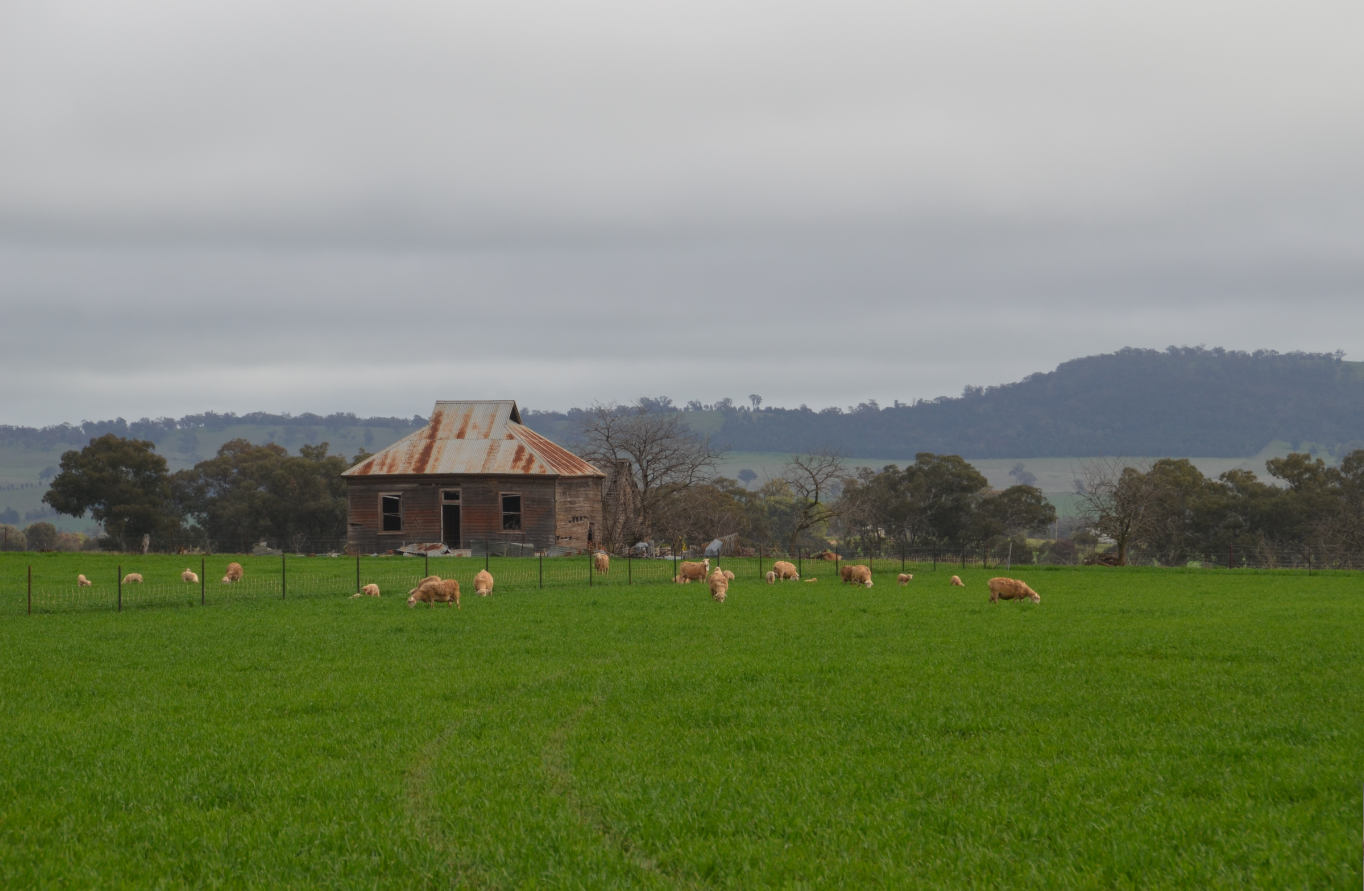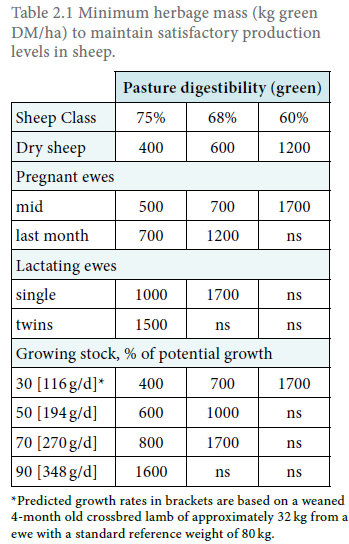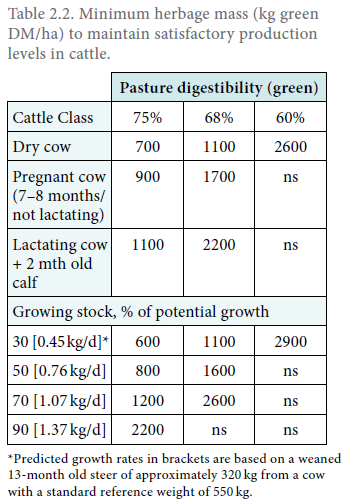Grazing winter wheat
What you can do to increase weight gains by up to 50%
By Dr Sue Street, Senior Land Services Officer (Livestock) & Rohan Leach, Regional Agricultural Landcare Facilitator
July 2020
With the improved profitability that dual purpose crops can offer, many producers will be busily managing their grazing crops at the moment. Winter wheat is important in forage systems as it is used to fill the winter feed gap due to its high nutritive value, with metabolisible energy of 9 - 14 MJME kg DM and crude protein of 9 – 34% (Bhanugopan et al. 2015). Utilisation of dual-purpose crops such as winter wheat has led to an increase in livestock stocking rates over winter as a consequence of increased forage supply (Dove et al. 2012). While many graziers will have traditionally grazed oats or barley, wheat has some added management requirements to see optimal weight gains and productivity in their livestock.

Mineral imbalance in winter wheats
Because of the high quality of winter cereals, high liveweight gains are possible: 320 to 360 grams a day in cross-bred lambs and more than 1.5 kilograms per day in cattle (Bell & Dove 2012). If you aren’t seeing these production targets, there may be issue with mineral imbalance within the diet. Therefore, providing supplementation to livestock can result in huge increases in liveweight gains in both sheep and cattle. Up to 54% and 62% increase in liveweight gain in sheep and cattle respectively has been observed (Table 1, Lush 2014).
Livestock | Supplement | Increase in liveweight gain (%) |
Sheep | Magnesium | 24 to 25 |
| Sodium | 18 to 37 |
| Magnesium and sodium | 31 to 54 |
Cattle | Magnesium | 14 |
| Sodium | 23 |
| Magnesium and sodium | 21 to 62 |
Table 1: Effect of mineral supplementation on the liveweight gains of sheep and cattle grazed on dual purpose wheat (Lush 2014)
All young growing crops contain an imbalance of potassium (K), sodium (Na) , magnesium (Mg) and calcium (Ca) that can cause metabolic disease (sodium deficiency, hypomagnesaemia or hypocalcaemia) and possible livestock mortality. Risk of these metabolic diseases are much higher in wheat (Lush 2014).
Wheat typically has a high K content and very low Na content. Ruminants when fed high K diets, such as wheat, decrease their absorption of Mg. This result in a high rumen K: Na ratio, which impedes magnesium absorption in the rumen. It has also been shown (Goff 2008) that this decrease in Mg absorption, decreases the sensitivity of the parathyroid hormone receptors, which may lead to hypocalcaemia.
Therefore mineral supplementation is needed to get the best out of your livestock on winter wheat. Mineral supplementation can be either in a form of a loose lick or other commercial products, as long as they contain Mg, Na and Ca.
For example, there are three types of loose lick minerals mixes you can used for supplementation:
- 1:1 mix of Causmag® and salt, for growing livestock
- 2:2:1 mix limestone, salt and Causmag®, recommended for pregnant and lactating livestock
- 1:1 mix of lime and salt, recommended for pregnant and lactating livestock if they find the Causmag® unpalatable
There are a number of different ways in which you can feed out mineral loose lick. For example, many people use chemical drums or PVC pipe cut in half. When supplementing minerals ensure there is enough access for all animals, so have a few access points spread around the paddock. Remember to either replace or break up the lick after rain, as it will set hard. For animals that are reluctant to utilise the mineral supplementation, proven methods include mixing some grain in with the lick or putting molasses around the lip of the supplement trough.
Crop management
Managing crop nitrogen (N) is a key factor to insure animal health and productivity, so soil testing to gain understanding of soil N levels is recommended. In paddocks where N is limiting, early application of N to grazing crops, either at sowing or soon after emergence, should be made to ensure fast crop growth and establishment. Application of N immediately prior to grazing can cause dangerous build ups of nitrate in the crop increasing the chance of nitrate toxicity in livestock. Where possible, in-season N applications should be made after the crop has been grazed and stock pulled out. This has the added benefit of boosting plant recovery time allowing a second graze sooner and better grain recovery potential. As a general rule to avoid nitrate poisoning, stock should be withheld from paddocks top dressed with urea for at least 14 days after application with longer withholding sometimes required during very cold periods with low crop growth.
Timing of grazing is important when considering the eventual crop yield. When putting stock onto the crop, the classic “tug test” should be performed to ensure plant roots are well anchored. This will generally be around early tillering or around 10-15cm in height.
The timing of when to take animals off the crop is far more important for crop recovery and grain yield. Significant reductions in grain yield will be observed where grazing is carried out past Growth Stage (GS) 31 i.e. when the growing point or node is starting to move up the stem. Traditionally this has been during August for most producers in the Central West however it is important to physically observe this in your crops. Locking up the paddocks on the 1st of August may mean that you are leaving weeks of grazing potential with no additional return per hectare or alternatively, reducing grain yield significantly if the growth point has been damaged.
Grazing/livestock management
Benchmarks of minimum green herbage mass are used to indicate the nutritional requirements of livestock at different stages of their reproductive cycle and for growth. There are some general rules of thumb in term of herbage mass when it comes to cereals. The factors determining herbage mass are crop height, density and dry matter. These ‘rules of thumb’ allow you to indicate what class of animals can be put onto different pastures/crops, see Tables 2.1 and 2.2) (Graham, 2017).


(Source: Graham, 2017)
Remember to introduce livestock slowly to a new diet so that the rumen microflora have a chance to adjust to the high quality diet. It will normally take up to 7 to 10 days to become accustomed to the new feed. Restricting grazing to 1-2 hrs per day, slowly increasing to unrestricted access over 7-10 days will allow stock to become more accustomed to their feed (NSW DPI, 2002).
If this is not possible for you to slowly introduce the livestock, ensure you have a roughage source available in the paddock, such as medium to good quality hay. The hay’s quality is important. If poor in quality animals will not eat it, so it becomes ineffective in providing roughage to the animals.
It is important that producers are managing their grazing wheats to their full potential, otherwise opportunities to reach production targets will be missed. For more information on moving stock onto winter crops click here. To see more information on the Dual Purpose grazing crop trials that the Central West LLS are managing click here. Alternatively if you’d like advice on grazing dual purpose wheat and supplementation to livestock, call a member of the CW LLS Ag Advisory Team.
Bibliography
Bhanugopan MS, Fulkerson WJ, Hyde M, Fraser DR (2015) Effect of dietary potassium supplementation on the calcium absorption capacity in the rumen and abomasum and fractional excretion of urinary minerals in sheep. Animal Production Science 55, 508 – 514.
Bell L & Dove H (2012) Mineral supplements needed when grazing cereals. GRDC, GroundCover™ Issue: 98. Retrieved from: https://grdc.com.au/resources-and-publications/groundcover/ground-cover-issue-98-may-june-2012/mineral-supplements-needed-when-grazing-cereals
Dove H, Kelman WM, Kikegaard JA, Sprague SJ (2012) Impact of magnesium-sodium supplementation on liveweight gains in young sheep grazing dual-purpose cereal or canola crops. Animal Production Science 52, 1027-1035.
Goff JP (2008) The monitoring, prevention and treatment of milk fever and subclinical hypocalcaemia in dairy cows. Veterinary Journal 176, 50-57.
Graham P (2017) PROGRAZE manual: profitable, sustainable grazing. NSW Department of Primary Industries, 9th Edition.
Lush D (2014) Rules of thumb for grazing cereals. GRDC, GroundCover™ Issue: 109. Retreived from: https://grdc.com.au/resources-and-publications/groundcover/gc109/rules-of-thumb-for-grazing-cereals